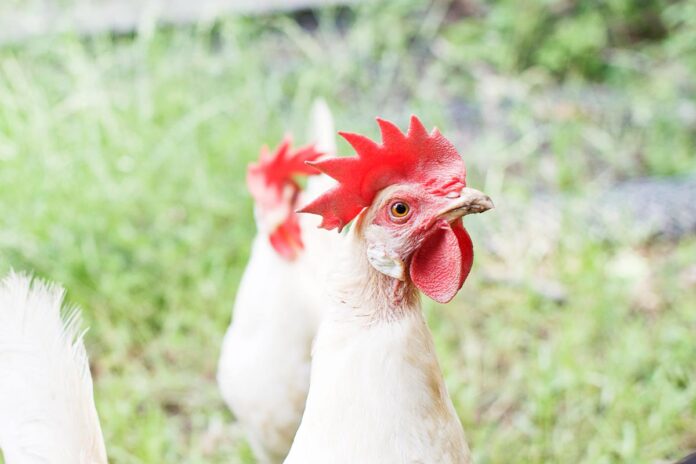
Variation in the response of poultry to Campylobacter helps identify key genes that may provide resistance to infection.
Research has identified genes in poultry that could offer resistance to harmful bacteria commonly found in poultry and could inform ways to limit the risk of associated food poisoning in people.The study, led by a team from the Roslin institute, has identified a large number of genes in poultry guts that may determine whether the birds are resistant to Campylobacter. The insights could inform research towards breeding chickens that are less likely to carry Campylobacter bacteria, and so limit the risk to poultry consumers.
Immunity genes
Scientists tested the effects of Campylobacter infection on poultry that were bred to be resistant or susceptible to the bacteria. Analysis of gut tissue showed differences in activity of a large number of genes, including some involved in immunity, such as the so-called Major Histocompatibility Complex and antimicrobial peptides.
The variation between these genes in susceptible and resistant chickens may partly explain their response to Campylobacter. These findings, published in BMC Genomics, reinforce previous research by the same team.
Previous findings
An earlier study, published in Applied and Environmental Microbiology, had investigated the role of microorganisms in the poultry gut in susceptibility to infection. The team found that transplanting gut microbes from chickens that were resistant to Campylobacter into chickens that were susceptible did not enable resistance to infection.
A further study, published in Scientific Reports, identified regions in the genetic makeup of chickens that are linked to resistance to Campylobacter.
Scientists looked for variation at specific positions in the poultry’s genome and corresponding numbers of Campylobacter in the gut of the birds.They combined this with analyses of the expression of genes in chickens that were resistant or susceptible to colonisation by the bacteria.
Results informed the extent to which parts of the chickens’ genetic code can be linked to the prevalence of Campylobacter in the birds’ gut. The latest findings also validate the outcome of another study, also published in BMC Genomics, which analysed the genetic code of chickens to identify areas linked to birds’ susceptibility or resistance to Campylobacter. Genes highlighted in this study included the Major Histocompatibility Complex.
Source: The Roslin Institute

















